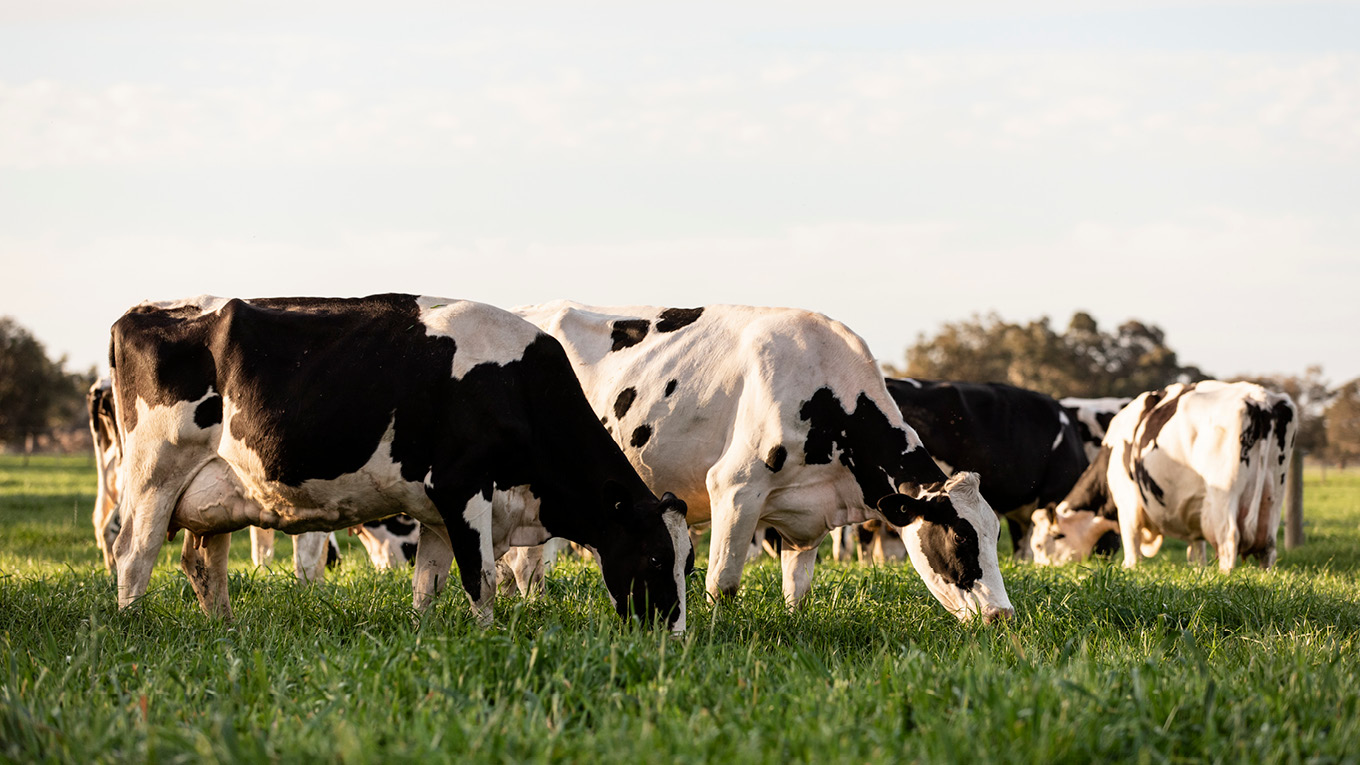Turnips
Turnips (Brassica rapa) are one of the main brassica forage crops grown on dryland dairy farms in southern Victoria.
Their high potential for growth during summer and exceptional nutritional value for dairy cows makes them a valuable option to provide dry matter throughout the summer and fit into a perennial ryegrass-based system.
Turnips can provide feed throughout summer and autumn to complement the pasture system, depending on the variety that is sown. A range of different maturity times allows crops to be available for grazing during the summer and autumn.
Turnips can be considered in situations where pasture quality and quantity limits milk production. Turnips have a high yield potential, but this can be variable as they are sensitive to lack of moisture and insect damage. Milk production responses in diets containing turnips are relatively good as it is a high-energy feed.
Only one grazing can be obtained from turnips, compared to regrowth brassicas where more than one grazing is obtained over a longer period.
Performance
Dry matter (DM) yields of more 10 tonnes per hectare are achievable with turnips. However, climatic conditions and weed and insect management can greatly influence this yield. Subsequently, the cost per tonne of DM consumed is also highly variable. With higher yields and utilisation, turnips can become very cheap on a cents per kilogram of DM basis, as costs are diluted across a relatively large amount of dry matter.
Turnips are a high-energy feed (similar to barley) suitable for lactating dairy cows and are a valuable source of crude protein during the summer and autumn.
Agronomy
Soil moisture conservation is key to the successful establishment of turnips, particularly in areas, where late spring and summer rainfall is not reliable. Early selection of paddocks, cultivation and good weed control will help conserve moisture for turnip growth.
A full inversion technique (mouldboard ploughing) reduces weed germination in comparison to chisel ploughing and could be an option as broadleaf weeds cannot be controlled with an in-crop herbicide.
Sowing date can range from September through to December, depending on the climate, soil moisture and the variety chosen. An agronomist will be able to provide advice on suitable varieties, sowing rates and plant densities.
Lower sowing rates encourage bulb development, where high sowing rates allow early yield and a high leaf:bulb ratio.
Turnip seed should be sown to a depth of five to 10 millimetres in a firm and moist seedbed and rolled after sowing to improve the seed-soil contact.
Phosphorus rates of 20 to 25kg/ha is generally required at sowing and other nutrients such as molybdenum and boron are needed by turnips to reach maximum growth potential.
Insecticide-coated seed is available to protect the seed and seedling during early establishment.
Management
Turnips can only be grazed once. This grazing happens over a shorter period than other regrowth brassica species. The benefit of this is that paddocks are available for resowing earlier than if longer-lasting varieties are sown.
To achieve high utilisation and avoid health disorders, careful grazing management and allocation of turnips is required. Stock should be given access to turnips slowly and build up to maximum allowance over at least a week. The strip grazing process should be started slowly by providing access for only 1–2 hours initially.
Turnips are low in effective fibre and therefore fibrous supplements such as silage can be combined with turnips to reduce potential for animal health issues. A maximum of 5–6kg DM of turnips per day per head reduces animal health risks.
More information is available on the Turnips fact sheet.



